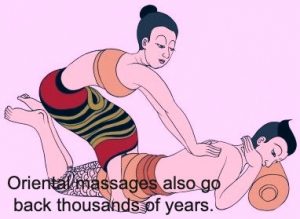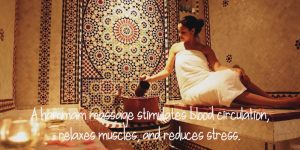Massage, as many know, is one of the most ancient medical procedures. It is likely that people of ancient times first (out of sheer instinct) tried to relieve their muscle aches with squeezing, rubbing movements, which later resulted in more conscious, professional movements.
But exactly how long does the tradition of massage go back? How does it appear in some cultures? What are the specifics of massage in another countries?
There are some interesting facts about the types of massage listed below, grouped into different countries, through which we can gain insight not only into the characteristics of the different types of massage, but also into their historical background.
China
Thousands of years of acupressure treatment, derived from the practice of acupuncture, is extremely popular in China. It is extremely effective against back pain, headaches, muscle aches, but can also be an excellent antidote for sinus problems, arthritis, and stress and tension. It helps to remove the toxic substances in our body and improves our general well-being.
During acupressure massage, gentle but firm pressure is applied to the acupuncture points of the body with the help of the hand, fingers or elbow. Even a single such massage can help stimulate blood circulation and relax muscle tension.
The feeling of calm and relief is practically guaranteed. (Interestingly, China’s first collection of medical topics, The Yellow Emperor’s Classic of Medicine, also deals with massage, so massage was a part of traditional Chinese medicine. To this day, it is one of the most important works of traditional Chinese medicine. There is no consensus on the date of this collection, but it is certain that it dates back to the centuries before our time.)

Greece
The ancient Greeks (like the Romans) took over various massage therapies from the Egyptians. (Hippocrates, referred to as the father of medicine, also recognized the physiological effects of massage, and he recognized one of its contraindications, fever.)
In ancient Greece, athletes preferred to use various massage techniques before competitions to condition their bodies. Doctors often used oils and herbs during massages. This is where the method of aromatherapy massage, which is still popular today, comes from. In doing so, the room used for the massage is rocked with a specific essential oil, helping the client to relax and increase their energy level.
Different essential oils have their own unique properties and can also be blended according to customer needs. (However, aromatherapy massage, or an older version of it, has appeared not only in Greece, but also in the aforementioned Egypt and ancient Italy.)
India
In India, a five-thousand-year-old natural medicine system, Ayurveda, plays a very decisive role in terms of medicine. This can be seen as a kind of alternative treatment that places great emphasis on disease prevention, while at the same time being in harmony and balance with the world around us. According to the principle of Ayurveda, body and spirit form an inseparable unit, not merely influencing each other.
Ayurvedic massage improves blood flow, removes toxins and rejuvenates the body. In the process, a preheated mixture of massage oils containing herbs is used.
(These ointments are put together according to the possible illnesses, diet, and physique of the massaged party.) The part of the body (foot or head) to be treated during the massage is stimulated with rubbing, gently kneading, and tapping beats.
Turkey
In many countries, including Hungary, a few people could hear about traditional Turkish massage, the hammam. Turkish baths (due to the expansion and campaigns of the Ottoman Empire) were built in many places, many of which still function today. (As an example, such a spa is Cemberlitas Hamami, which is located in what is now Istanbul and was built in the 15th or 16th centuries.) Visitors to such baths have the opportunity to take part in treatments in keeping with the traditions of old times.
The first step in a hammam massage is to keep your body warm in front of it, for which watering with warm water can be just as great a tool as hot steam. The massage itself appears in different forms. They use stronger movements somewhere, while in some places they combine foam treatment and air-filled pillow washing with stretching and relaxing dishes. (The interesting thing about this type of massage is that it is usually performed on a heated marble bed.)
A hammam massage stimulates blood circulation, relaxes muscles, and reduces stress.

Mexico
Perhaps a little-known Mexican invention for many could be the Hakali massage (also known as the cactus massage). As the name suggests, the most important ingredient in this type is the cactus, which has a number of antioxidants.
During the Hakali massage, cactus leaves are pushed through the client’s body, paying special attention to the tired muscles.
But before that, of course, the thorns are removed and the leaves are heated in hot water. The skin is then hydrated with a creamy substance (which also contains the stem and flower of the cactus) to help detoxify and refresh.
Hawaii
When we talk about Hawaiian types of massage, we can think of lomi-lomi in particular. One of the characteristics is that the massage can vary from island to island, but even from family to family.
The lomi-lomi massage combines deeper pressure and caressing movements.
By the way, it does not require any special equipment. It can be done in the same way in a massage parlor as on the beach or seaside, and can have a relaxing effect anywhere.
Sweden
It is probably no exaggeration to say that Swedish massage is one of the best known and most commonly used types of massage in Europe. (This may be why it is referred to as a classic massage in many parts of the world instead of a Swedish massage.)
This type provides the basis for therapeutic, segmental, and even sports massage. (This type of massage can be great for regular athletes, among other things, because it also helps reduce lactic acid buildup.)
In addition to reducing pain, Swedish (or classic) massage relieves joint stiffness, improves blood circulation, and results in flexibility. It can be a great way to relieve stress, relieve cramps, improve general well-being and relieve chronic fatigue.
This type of massage is made up of five basic techniques, which are smoothing and kneading. tapping and vibrating (or in other words vibrating). The order of these is not entirely bound. (For example, in the past, rubbing was preceded by kneading, nowadays this is no longer a generally accepted rule.)
What is the best massage type?
Our world can be said to be extremely interesting and versatile, whatever the topic. This is also the case with massage. It seems almost unbelievable how many types of this sector have emerged over the past millennia. Nevertheless, we can discover a lot of similarities in them.
Whichever type you choose, it can all help us relax and heal. Massage is an experience that virtually anyone can and should try. In addition to the types listed, we still have plenty of options.
However, it is also important to note that before participating in any program that we seem sympathetic to, look for contraindications. While massage can be a perfect tool to protect not only our mental and spiritual health, but also our physical health, in addition to various summaries and testimonials, it may be worthwhile to delve deeper into possible